
Asaphodes is a genus of moths in the family Geometridae erected by Edward Meyrick in 1885. This genus is endemic to New Zealand and species within this genus are found throughout New Zealand including the North, South and Stewart / Rakiura Islands.

Gymnobathra bryaula is a moth of the family Oecophoridae. It was described by Edward Meyrick in 1905. It is endemic to New Zealand.
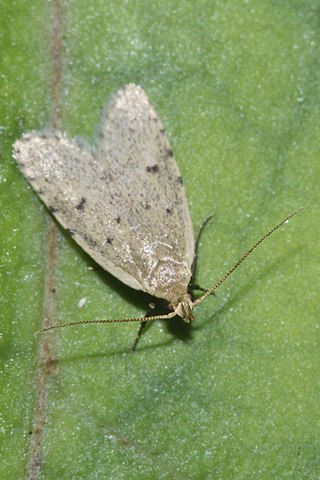
Gymnobathra calliploca is a moth of the family Oecophoridae. It was described by Edward Meyrick in 1883. It is endemic to New Zealand.

Gymnobathra callixyla is a moth in the family Oecophoridae first described by Edward Meyrick in 1888. It is endemic to New Zealand.

Atomotricha is a genus of moths of the family Oecophoridae. The species in this genus are endemic to New Zealand.

Scythris niphozela is a species of moth in the family Scythrididae. It is endemic to New Zealand. It is regarded as being endemic to the Kaitorete Spit area although previously it had been recorded in the Manorburn Ecological District. This species inhabits the foredune area of Kaitorete Spit. The larvae feed on Carmichaelia appressa. Adults are day flying and are on the wing from October to December. These moths are not attracted to light. The species are classified as "At Risk, Naturally Uncommon" by the Department of Conservation.
Gymnobathra origenes is a species of moth in the family Oecophoridae. This species is in need of taxonomic revision and it has been hypothesised that it belongs to the family Gelechiidae. The species is endemic to New Zealand. It has been classified as Data Deficient by the Department of Conservation. This species is known from only one specimen.

Gymnobathra is a genus of moths in the family Oecophoridae. It was first described by Edward Meyrick in 1883. All species are found in New Zealand.

Tingena is a genus of the concealer moth family (Oecophoridae). This genus is endemic to New Zealand.

Tingena aphrontis is a species of moth in the family Oecophoridae. It is endemic to New Zealand and has been collected at altitudes between 3000 - 5000 ft at Arthur's Pass and Mount Arthur. The species lives in open alpine habitat amongst alpine vegetation. Adults of the species are on the wing in January.

Tingena letharga is a species of moth in the family Oecophoridae. It is endemic to New Zealand and has been observed in Otago. Adults are on the wing in December and January.

Barea exarcha is a moth of the family Oecophoridae. This species was first described by Edward Meyrick in 1883. It is found in Australia and New Zealand.
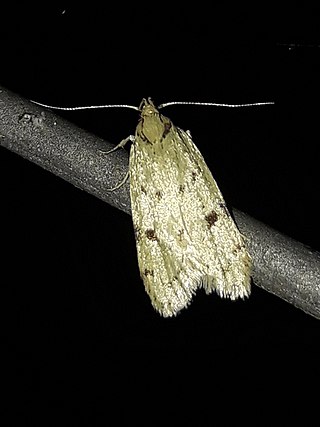
Eulechria zophoessa is a moth of the family Oecophoridae. It was first described by Edward Meyrick in 1883. This species is endemic to New Zealand. The classification of New Zealand endemic moths within the genus Eulechria is regarded as unsatisfactory and in need of revision. As such this species is currently also known as Eulechria (s.l.) zophoessa.
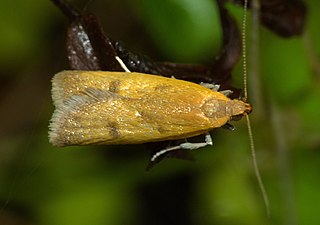
Gymnobathra parca is a moth in the family Oecophoridae first described by Arthur Gardiner Butler in 1877. It is endemic to New Zealand. It has been hypothesised that this species likely belongs to another genus.

Gymnobathra philadelpha is a moth in the family Oecophoridae first described by Edward Meyrick in 1883. It is endemic to New Zealand.
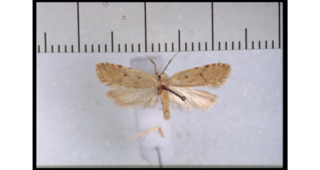
Gymnobathra primaria is a moth in the family Oecophoridae first described by Alfred Philpott in 1928. It is endemic to New Zealand. It has been hypothesised that this species likely belongs to another genus.
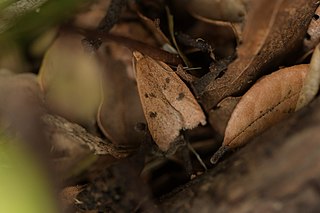
Gymnobathra sarcoxantha is a moth in the family Oecophoridae first described by Edward Meyrick in 1883. It is endemic to New Zealand. It has been hypothesised that this species likely belongs to another genus.

Scythris epistrota is a species of moth in the family Scythrididae first described by Edward Meyrick in 1889. It is endemic to New Zealand and has been observed in the South Island. The larvae have been found on species of New Zealand broom and they pupate within an irregularly shaped, dense, silken cocoon. Adults are day flying and are on the wing from November until February.

Scythris triatma is a species of moth in the family Scythrididae first described by Edward Meyrick in 1935. It is endemic to New Zealand and has been recorded in the South Island. Adults are day flying and are on the wing in November. The species have been recorded at saline wetlands and sites with saline soils.

Trachypepla is a genus of moths of the family Oecophoridae. It was circumscribed in 1883 by Edward Meyrick. The species within this genus are indigenous to Australia and New Zealand.



















